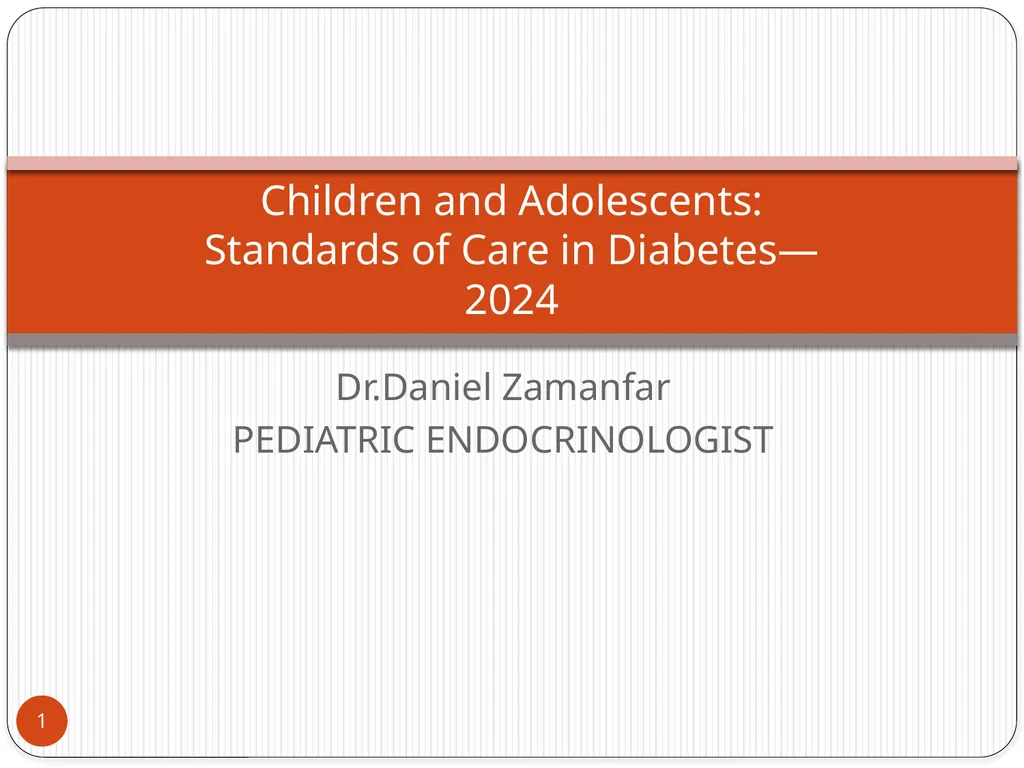
Author : karlyn-bohler | Published Date : 2025-05-23
Description: Dr.Daniel Zamanfar PEDIATRIC ENDOCRINOLOGIST Children and Adolescents: Standards of Care in Diabetes 2024 1 The American Diabetes Association (ADA) Standards of Care in Diabetes includes the ADAs current clinical practiceDownload Presentation The PPT/PDF document "" is the property of its rightful owner. Permission is granted to download and print the materials on this website for personal, non-commercial use only, and to display it on your personal computer provided you do not modify the materials and that you retain all copyright notices contained in the materials. By downloading content from our website, you accept the terms of this agreement.
Here is the link to download the presentation.
"Dr.Daniel Zamanfar PEDIATRIC ENDOCRINOLOGIST"The content belongs to its owner. You may download and print it for personal use, without modification, and keep all copyright notices. By downloading, you agree to these terms.













